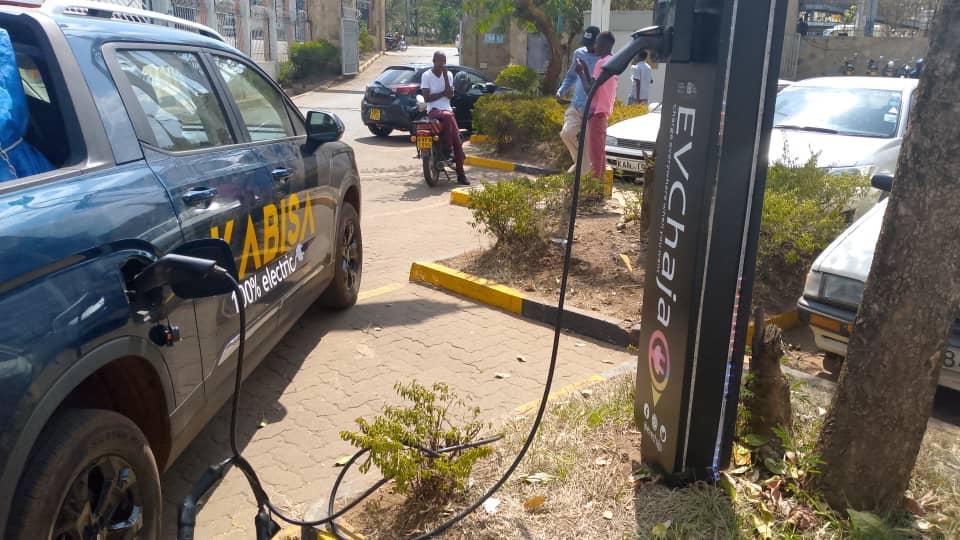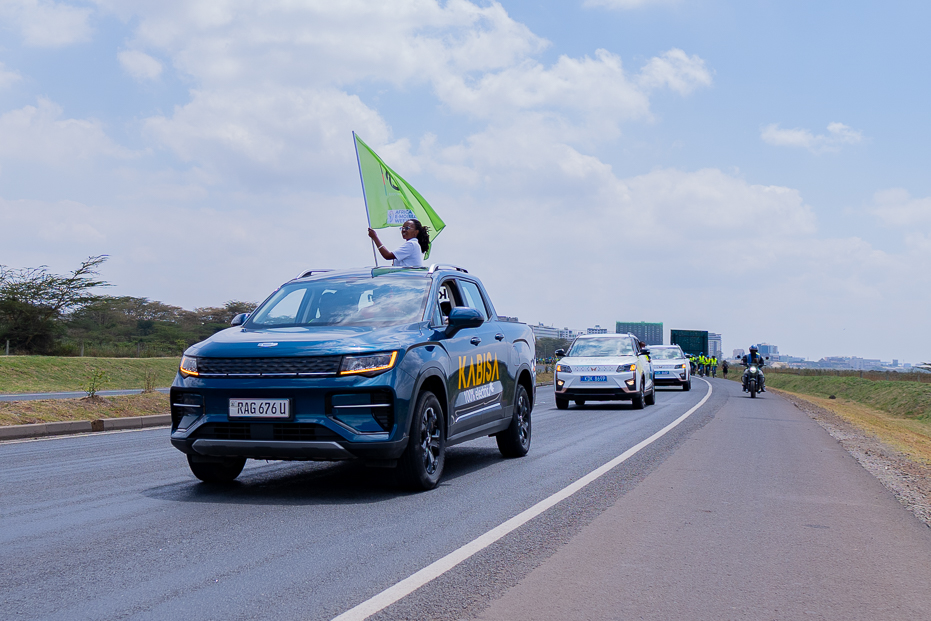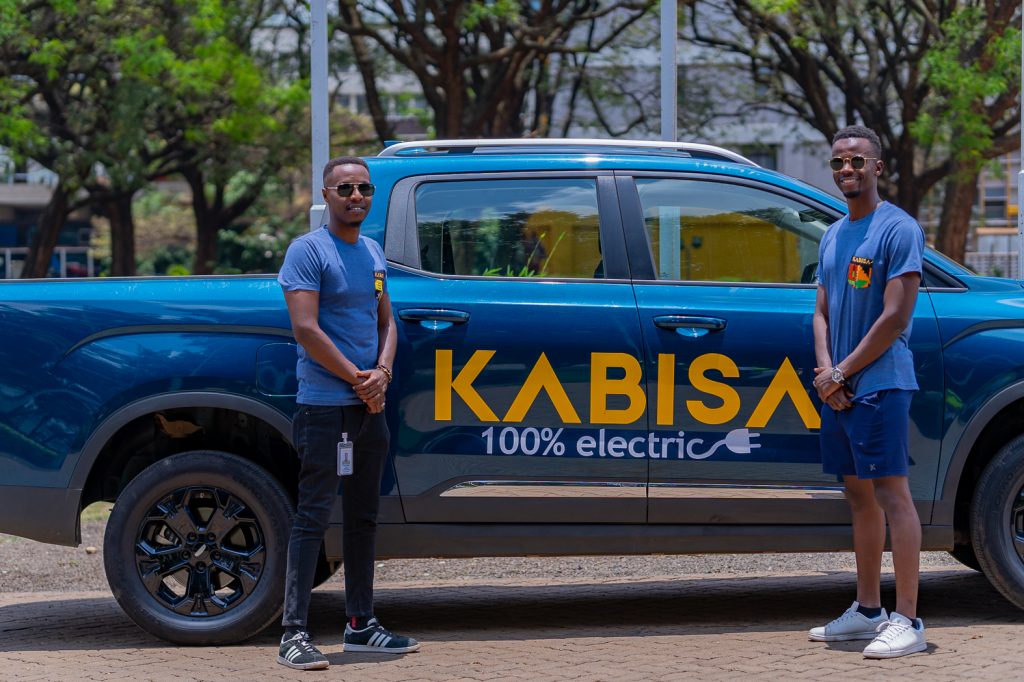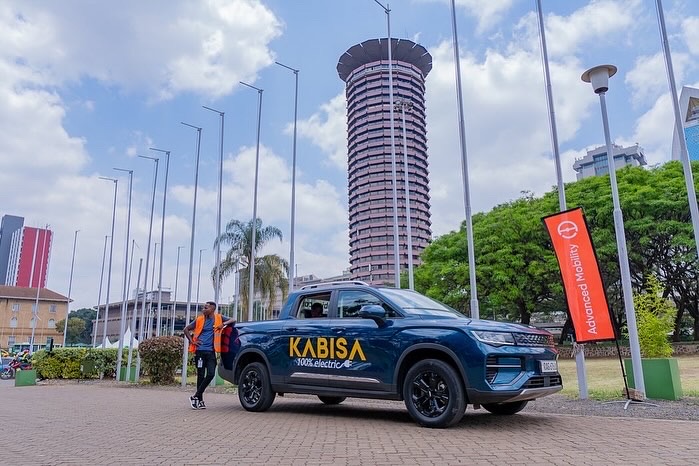By Timothy Albrite and Kabisa
Imagine a road trip of 2,400 kms (roundtrip) across two countries and a cost of only 6,500 KSH (equivalent to $50, RWF 67,00/- or UGX 184,00) for charging. Impressive right?
This is a reality achieved by Kabisa’s Radar Rd6 Electric pickup, which recently completed the 2400km journey from Kigali to Nairobi.
In September 2024, the Kabisa team embarked on the first-ever electric vehicle road trip from Kigali, Rwanda to Nairobi, Kenya. This three-day journey pushed the limits of Electric Vehicle (EV) endurance and reliability in East Africa while shattering the many myths surrounding EVs.
Autonews magazine got in touch with the Kabisa team to bring you the details of how it all went down;
Let’s start with the vehicle in question. The Radar RD6 pickup is an EV sold by Kabisa with a battery range of 410kms on a full charge. It features a GB/T charging port, allowing compatibility with various charging stations across the region.
The Radar RD6 pickup specifications:
- Battery Capacity: 75 kWh
- Range: 410 km (CLTC depending on driving conditions and load)
- Payload Capacity: 550 kg
- Charging Compatibility: GB/T (DC fast charging and AC charging)
- Acceleration: 0-100 km/h in approximately 8 seconds
- Onboard Charger: 7 kW AC (Level 2 charging capability)
- Onboard Generator: In case of a serious emergency
The Journey
- Kigali to Mbarara
The first 300 kms of the journey from Kigali, Rwanda to Mbarara in Uganda took 4 and a half hours. The Radar started with a full charge from Kigali from a Kabisa 30 kW DC fast charger at SP station in Kigali and arrived in Mbarara with 31% of the charge left, which can travel 129 kms.
However, this is also where they encountered the first challenge. Upon arrival in Mbarara, the team discovered a lack of public charging infrastructure.
They attempted to use a portable generator but faced technical difficulties resulting in a breakdown. They resulted in local assistance to connect their 7 kWh charger to a distribution box at a Rubis gas station, charging overnight for approximately 8 hours.
- Mbarara to Kampala
This was a distance of 200 kms that took 5 hours and left the radar with 22% of charge upon arrival or a range of 92 kms.
The first charging stop in Kampala was an AC charger from EV World, managed by Robert Wakabi, that took approximately 3 hours. The second one was at City Oil using a DC fast charger that took 1 and a half hours to a full charge at 35kW.
The team leveraged the support of local EV advocates, emphasizing the importance of community in developing the EV landscape in Uganda. The fast-charging capabilities at City Oil allowed them to replenish quickly, demonstrating the practical usability of the vehicle.
- Kampala to Jinja, Jinja to Kisumu
The 175kms journey from Kampala to Jinja took 3 hours. In Jinja, the team attempted to charge but faced logistical issues that prevented successful charging.
They proceeded to Kisumu, a 234 km distance that took 4 and a half hours where they accessed a 7 kWh charger through EV Chaja. The team faced a mix of unique experiences through Jinja and Kisumu, including amusing encounters fueled with disbelief with the electric pickup at military bases. The Kisumu stop involved a charging time of approximately 6 hours, showing the varying availability and speed of charging infrastructure.

- Kisumu to Nakuru
From Kisumu, they drove down to Nakuru, a 3-hour journey. The charging stop in Nakuru highlighted the growing EV infrastructure but included odd regulations. The guard humorously limited their charging time to an hour. Nevertheless, the team managed to charge adequately, allowing them to proceed to the final destination, Nairobi.
- Arrival in Nairobi
The charge managed to get the team to Nairobi where the Radar RD6 pickup underwent the final charge stop at BasiGo, using a GB/T fast charger to ensure it was fully charged for city driving.
The Radar RD6 made a statement, arriving in time for the Africa E-Mobility Week Conference, where the Kabisa team led Africa’s largest EV parade, proudly displaying the future of electric mobility in East Africa.
After a successful series of test drives, discussions, and exhibitions, the team prepared for the journey back to Kigali—this time, even smoother than the trip there.
The return trip back to Kigali was equipped with more knowledge which earned quicker charging stops and a smoother journey through the same 4 towns and cities. It took an average of 2 full days both ways for this successful trip.

Charging Costs and Efficiency
Throughout the trip, the average cost to fully charge the Radar RD6 ranged from $5 to $10 per charge, depending on the type and duration of the charger used. This cost-effectiveness reinforces the saving opportunities of operating an electric vehicle in the region, particularly compared to traditional fuel costs.
In comparison to the Toyota Hilux, a popular ICE Vehicle alternative
Performance Assessment and Key Takeaways
- Reliability: The Radar RD6 demonstrated impressive reliability across different terrains, overcoming generator failures and unexpected charging delays. Its durable build quality proved effective in handling the varied road conditions of East Africa.
- Infrastructure Gaps: While the trip highlighted progress in charging infrastructure, it also showed the need for expanded networks of public charging stations and educating charging operators on different charging needs, especially in key areas and towns along the borders. Collaborations with local businesses and EV enthusiasts will be crucial in advancing the EV ecosystem in East Africa.
- Community Engagement: The involvement of local EV advocates like Robert Wakabi emphasized the importance of building a community around electric mobility. Their insights not only facilitated charging solutions but also inspired discussions on the future of EVs in the region.
- Real-World Testing: This journey serves as a case study for future long-distance EV travel in East Africa. By documenting the performance and charging logistics, Kabisa has laid a foundation for future EV users to replicate and improve upon this journey.
The first-ever electric vehicle road trip from Kigali to Nairobi in the Radar RD6 pickup has proven that electric mobility is not just feasible but also an effective way to travel in East Africa. With growing charging infrastructure and a committed community of advocates, the landscape for electric vehicles in the region looks promising.


